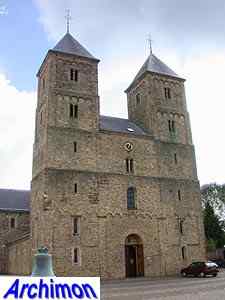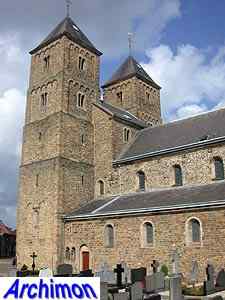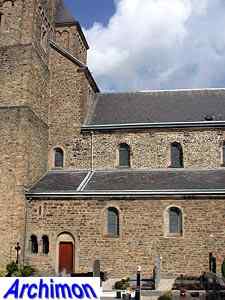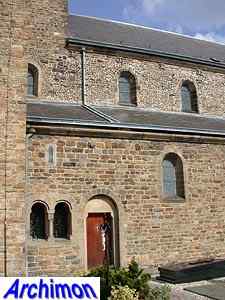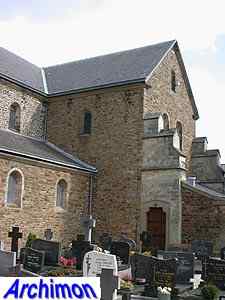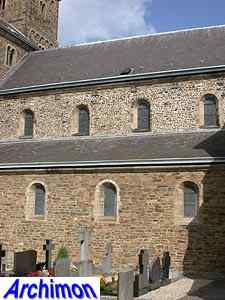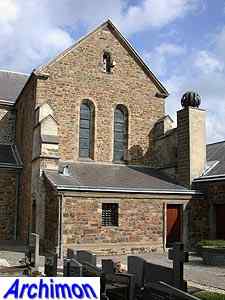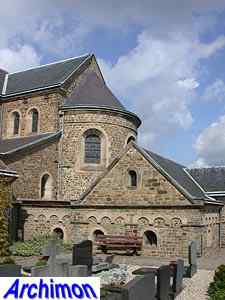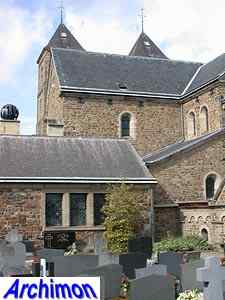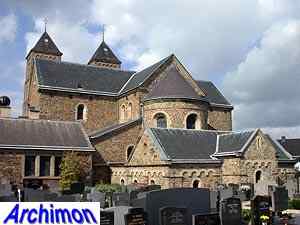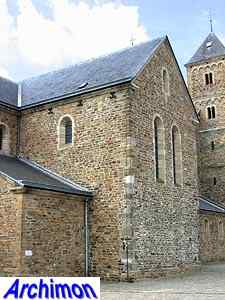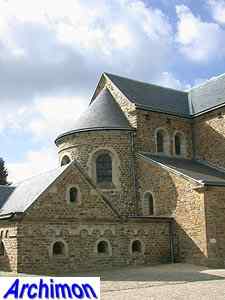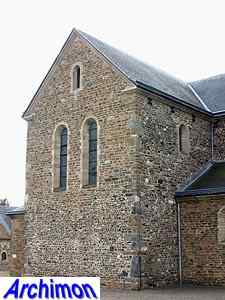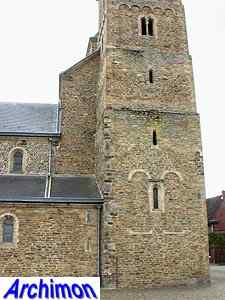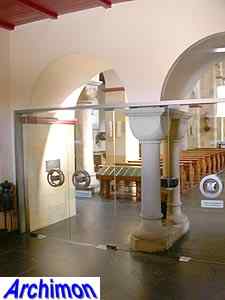
 The
Romanesque church of Susteren has a long history. In the 8th century a
monastery with church was founded, halfway down the road from Utrecht
to Echternach. Later this monastery became a convent, and after that a
worldly minster for noblewomen, a so-called Stift. The church was
destroyed by fire in the 11th century, and was replaced by a new one.
In the 12th century a westwork was added, similar to that of the church
of the minster in Essen, Germany. Like the example in Essen, this St.
Salvator's church had a closed westwork consisting of a massive-looking
central tower with an octagonal spire, with lower square stair-towers
on either side. Inside this westwork was a choir.
The
Romanesque church of Susteren has a long history. In the 8th century a
monastery with church was founded, halfway down the road from Utrecht
to Echternach. Later this monastery became a convent, and after that a
worldly minster for noblewomen, a so-called Stift. The church was
destroyed by fire in the 11th century, and was replaced by a new one.
In the 12th century a westwork was added, similar to that of the church
of the minster in Essen, Germany. Like the example in Essen, this St.
Salvator's church had a closed westwork consisting of a massive-looking
central tower with an octagonal spire, with lower square stair-towers
on either side. Inside this westwork was a choir.
A rare feature of this church is the crypt behind the choir which is
partly built above the ground. This crypt again is almost an exact copy
of the one in Essen and contains the remains of Carolingian king
Swentibold. The crypt and the choir are probably the oldest parts of
the church. Another similarity with Essen is the use of the
so-called alternating system in the church, with pillars and columns
used alternately.
Peculiar is the width of the transept, which is bigger than that of the
rest of the church. Again, this is very similar to the church in Essen.
After the French occupiers closed down the stift at the end of the 18th
century, the church was handed over to the parish, which had lost its
church by fire just a few years before. From 1885 to 1890 the church
according to plans by P.J.H. Cuypers
who gave the church much of its current look. The westwork, which was
in a very bad state, was changed to Cuypers' own taste, taking French
Romanesque churches as examples; the stair-towers were heightened,
while the originally higher central part of the westwork was not, and
received a simple saddle-roof instead of a replica of the vanished
spire. Because of this restoration and several others there is hardly a
single stone left of the original layer on the outside. The church
looks very young considering its age; restorations probably also
removed most of its charm.
The church is now dedicated to St. Amelberga, the first abbess of the
convent.
